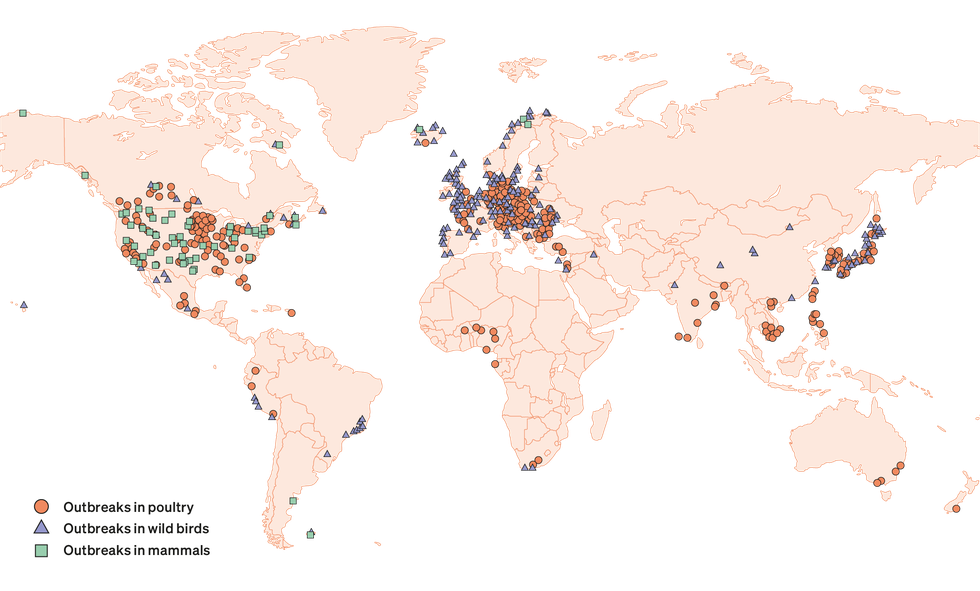About State of the World’s Animal Health Report:
- It is released by the World Organisation for Animal Health (WOAH).
- It provides the first comprehensive review of animal disease trends, risks, and challenges, from the uptake and availability of vaccines to the use of antibiotics in animals.
- Highlights of the Report:
- Infectious animal diseases are spreading to previously unaffected regions and species, with nearly half (47 percent) capable of zoonotic transmission.
- Bird flu, or high pathogenicity avian influenza (HPAI), which has caused the culling or loss of more than 630 million birds in the last two decades, was one of several animal diseases to affect new areas last year.
- Peste des petits ruminants (PPR), which has traditionally affected sheep and goats in developing countries, has re-emerged in Europe while African swine fever (ASF) reached Sri Lanka, travelling more than 1,800 km from the nearest outbreaks.
- In 2024, there were a further 3,517 cases of Bluetongue, an insect-borne virus that spreads among livestock, in 23 countries, while Germany experienced its first outbreak of foot-and-mouth disease since 1988.
- In Mexico, vets reported the first case of New World screwworm, a parasitic fly whose larvae eat the flesh of warm-blooded animals. The disease has also re-emerged in Nicaragua.
- Almost half of the WOAH-listed diseases notified to WOAH between 2005 and 2023 were considered a threat to human health with zoonotic, or animal-to-human infection, potential.
- The report cited climate change and increased trade among the factors influencing the spread and prevalence of animal diseases.
- Many are preventable through a combination of vaccination, improved hygiene, and biosecurity measures, but the report noted that access to animal vaccines remains uneven around the world.
- The report also emphasised the importance of disease prevention for reducing the need for antibiotic treatment and limiting the development of drug-resistant diseases.
- By 2050, antimicrobial resistance (AMR) is projected to cause livestock losses that jeopardise the food security of two billion people and result in a US$ 100 trillion economic loss if urgent action is not taken.
- Antimicrobial use, including antibiotics, in animals fell five percent between 2020 and 2022, with use in Europe seeing the biggest decline of 23 percent, followed by Africa at 20 percent.
- However, one in five countries continues to use antimicrobials as growth promoters, which is discouraged by WOAH.
What is the World Organisation for Animal Health (WOAH)?
- The WOAH, formerly known as the Office International des Epizooties (OIE), is an intergovernmental organization that focuses on improving animal health worldwide.
- It was founded in 1924 in response to rinderpest outbreaks in livestock.
- It was renamed as WOAH in 2022 to reflect its global role in animal health.
- WOAH’s primary objective is to protect the health of animals and to ensure a safe and fair trade in animals and animal products worldwide, by ensuring transparency in the global animal disease situation and by publishing health standards for international trade.
- WOAH is recognised as a reference organisation by the World Trade Organization (WTO) for international standards relating to animal health and zoonoses.
